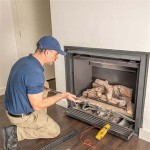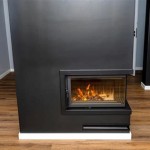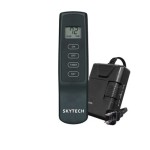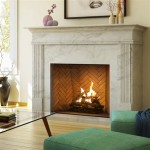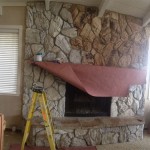Cast Iron Fireplace Covers: Functionality, Aesthetics, and Considerations
Cast iron fireplace covers, also known as fireplace screens or firebacks, represent a significant element in both the functionality and aesthetic appeal of a fireplace. They serve multiple purposes, ranging from preventing stray embers from exiting the firebox to enhancing the decorative style of a room. The enduring popularity of cast iron as a material for these covers stems from its durability, heat resistance, and ability to be molded into intricate designs. This article will explore the multifaceted nature of cast iron fireplace covers, examining their benefits, design variations, installation considerations, and maintenance requirements.
Historically, fireplace covers were a necessity. Open fireplaces, while providing warmth and a focal point for gathering, posed a considerable fire hazard. Sparks and embers could easily escape the firebox, igniting nearby rugs, furniture, or even structural elements of the building. The development of fireplace covers, particularly those made of cast iron, offered a substantial improvement in safety. Moreover, these covers provided a barrier to prevent drafts when the fireplace was not in use, helping to conserve heat within the room.
Today, while central heating systems have reduced the reliance on fireplaces as a primary source of heat, they remain a popular feature in many homes, valued for their ambiance and aesthetic appeal. Cast iron fireplace covers continue to play a vital role, albeit often with an increased emphasis on decorative elements. The market offers a wide array of designs, from simple, utilitarian screens to elaborate, ornate firebacks that serve as a statement piece within the room.
Key Benefits of Using a Cast Iron Fireplace Cover
The advantages of using a cast iron fireplace cover extend beyond mere aesthetics. While the visual appeal is undoubtedly a significant factor for many homeowners, the functional benefits are equally important. These benefits contribute to safety, efficiency, and the overall longevity of the fireplace itself.
Enhanced Safety: The primary function of a fireplace cover is to contain sparks and embers within the firebox. Cast iron, being a non-combustible material, effectively prevents these hot particles from escaping and potentially causing a fire. This is particularly crucial in homes with young children or pets, where the risk of accidental contact with a live fire is increased. A well-fitted cast iron screen or fireback provides a reliable barrier, minimizing the risk of burns and property damage.
Improved Efficiency: While a fireplace can provide supplemental heat, a significant amount of heat can also be lost up the chimney when the fireplace is not in use. A cast iron fireplace cover can help to reduce this heat loss by blocking the airflow up the chimney. This is especially true for solid-door covers or those with fine mesh screens that effectively seal the firebox. By minimizing heat loss, the cover contributes to improved energy efficiency and lower heating costs. Some firebacks, in particular, are designed to radiate heat back into the room, further enhancing the efficiency of the fireplace.
Protection of the Fireplace: The intense heat generated by a fireplace can gradually damage the firebox itself. The high temperatures can cause cracks in the firebrick lining, leading to structural deterioration over time. A cast iron fireback, placed at the rear of the firebox, acts as a protective shield, absorbing and distributing the heat more evenly. This reduces the stress on the firebrick and extends the lifespan of the fireplace. Furthermore, the fireback can prevent damage to the back wall of the fireplace, which might otherwise be exposed to excessive heat and soot accumulation.
Design Variations and Aesthetic Considerations
The design options for cast iron fireplace covers are extensive, catering to a wide range of architectural styles and personal preferences. From minimalist screens to elaborate Victorian firebacks, the available choices allow homeowners to customize the look of their fireplace and integrate it seamlessly into the overall design of the room.
Screens: Fireplace screens are typically placed in front of the firebox opening, providing a barrier against sparks and embers while allowing for a clear view of the fire. They come in various styles, including single-panel screens, three-panel screens, and arched screens. The frames are often made of cast iron, with mesh panels made of woven metal. The designs can range from simple geometric patterns to intricate floral or wildlife motifs. Some screens also feature decorative details such as finials, handles, and scrolling accents.
Firebacks: Firebacks are placed at the back of the firebox, serving as a protective barrier and radiating heat into the room. They are typically made of solid cast iron and often feature elaborate designs, including historical scenes, mythological figures, family crests, or ornate patterns. Firebacks were particularly popular in the 18th and 19th centuries and are often found in period homes. Modern reproductions are also available, offering a blend of historical aesthetics and contemporary manufacturing techniques.
Doors: Fireplace doors offer a more complete enclosure of the firebox. They are typically made of cast iron or steel, with glass panels that allow for viewing the fire. Doors provide a high level of spark protection and can significantly reduce heat loss when the fireplace is not in use. They also offer the potential to control the airflow to the fire, allowing for more efficient burning. Fireplace doors are available in a variety of styles, from traditional arched designs to modern, minimalist styles.
Surface Finishes: The finish of a cast iron fireplace cover can significantly impact its overall appearance. Common finishes include black, painted, and polished. Black finishes are traditional and offer a classic look. Painted finishes allow for customization and can be chosen to complement the color scheme of the room. Polished finishes highlight the natural beauty of the cast iron and add a touch of elegance. The choice of finish depends on the desired aesthetic and the overall style of the fireplace.
Installation and Maintenance of Cast Iron Fireplace Covers
Proper installation and regular maintenance are essential to ensure the safety and longevity of a cast iron fireplace cover. While some installations can be performed by homeowners, others may require the expertise of a professional installer.
Installation Considerations: Before installing a fireplace cover, it is crucial to measure the dimensions of the firebox opening to ensure a proper fit. The cover should be slightly larger than the opening to provide adequate coverage and prevent sparks from escaping. For screens, it is important to ensure that the screen is stable and securely positioned in front of the fireplace. For firebacks, the back of the firebox must be able to support the weight of the cast iron. If necessary, the firebox may need to be reinforced before installing a fireback.
Cleaning and Maintenance: Cast iron fireplace covers require regular cleaning to remove soot, ash, and dirt. A soft brush or vacuum cleaner can be used to remove loose debris. For more stubborn stains, a mild soap and water solution can be used. It is important to avoid using harsh chemicals or abrasive cleaners, as these can damage the finish of the cast iron. After cleaning, the cover should be thoroughly dried to prevent rust. For surfaces that have rusted, a wire brush can be used to remove the rust, followed by a coat of high-temperature paint or sealant to protect the metal. Regularly inspecting the cover for cracks or damage is also important. Damaged covers should be repaired or replaced to ensure their continued functionality and safety.
Safety Precautions: When handling a cast iron fireplace cover, it is important to wear gloves to protect your hands from scratches and burns. Allow the fireplace to cool completely before handling the cover, especially after a fire. When cleaning the cover, avoid using flammable liquids or sprays. Ensure that the work area is well-ventilated and free from obstructions. If you are unsure about any aspect of the installation or maintenance process, consult a qualified professional.
In conclusion, cast iron fireplace covers offer a combination of functionality and aesthetic appeal, making them a valuable addition to any home with a fireplace. By understanding their benefits, design variations, installation considerations, and maintenance requirements, homeowners can make informed decisions about selecting and caring for these enduring fireplace accessories.

Heavy Ornate Antique Cast Iron Fireplace Cover Vent Door 29 X 20 1 2

Fireplace Cover French Victorian Cast Iron Insert Mantel

Heavy Ornate Antique Cast Iron Fireplace Cover Vent Door 28 1 4 X 20 2

Use Old Iron Fireplace Cover On Wall Behind Stove In Kitchen Metal

1800s Antique Ornamental Cast Iron Fireplace Summer Cover

Tradition Cast Iron Fireplace Insert 38 Victorian

Gas Fireplaces Windsor Arch Kastle Fireplace

Dollhouse Miniature Fireplace Victorian Small Bedroom Resin Cast Iron Look 1 12 Scale

Stoll Aged Iron Fireplace Door Stylish Fireplaces

How To Re A Cast Iron Fireplace Direct Fireplaces
Related Posts


